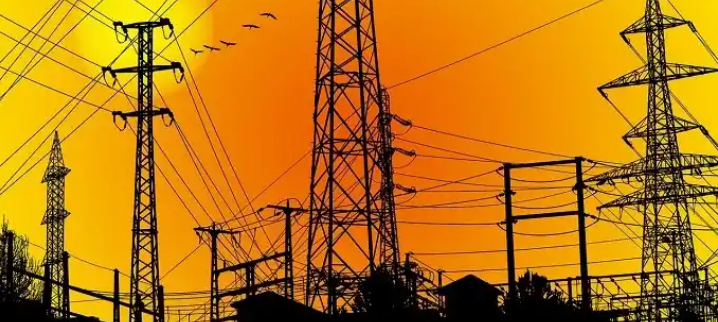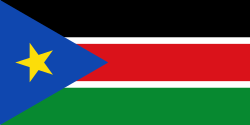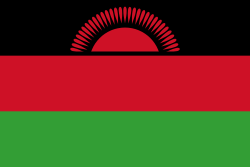Top 10 Countries With Worst Power Supply In The World

In an era defined by technological advancements and rapid urbanization, reliable power supply stands as the lifeblood of modern societies. However, across the globe, numerous nations grapple with the daunting task of providing consistent and accessible electricity to their citizens. This article delves into the intricate tapestry of power supply challenges faced by countries ranked amongst the lowest in global indices.
From the war-torn landscapes of South Sudan to the vibrant yet power-deficient streets of Nigeria, each nation's struggle for a stable energy grid reflects a multifaceted interplay of political, economic, and infrastructural factors. Inadequate investment, outdated infrastructure, and geopolitical conflicts have left many regions in darkness, hindering socio-economic progress and perpetuating cycles of poverty.
Hydropower-dependent nations like Mozambique and Zambia grapple with the capriciousness of climate patterns, while countries such as Haiti and Liberia, reliant on imported fossil fuels, confront the vulnerabilities of global energy markets. Additionally, issues of financial sustainability, inefficient tariff structures, and technical losses during transmission further compound the challenges.
This exploration not only sheds light on the diverse nature of these obstacles but also underscores the imperative for collaborative efforts between governments, international organizations, and private enterprises. By understanding the nuances of these struggles, we inch closer to illuminating the path towards a more equitable and sustainable global energy landscape.
Top 10 Countries With Worst Power Supply in the world
- South Sudan
- Haiti
- Yemen
- Mali
- Malawi
- Nigeria
- Liberia
- Zambia
- Mozambique
- Chad
1. South Sudan

South Sudan faces severe challenges in its power supply infrastructure. The country's energy sector is underdeveloped, with limited access to electricity, especially in rural areas. The main sources of power are hydroelectric dams and diesel generators, but they suffer from poor maintenance and lack of investment. Political instability and conflicts have hindered the development of a stable energy grid. Additionally, South Sudan's geographical conditions make it difficult to build and maintain power transmission lines. This results in frequent blackouts and unreliable electricity supply for both residential and industrial consumers.
2. Haiti

READ ALSO » Top 5 Best Power Bank Brands In Nigeria
Haiti grapples with a chronically inadequate power supply system. The nation heavily relies on imported fossil fuels for electricity generation, making it vulnerable to price fluctuations and supply chain disruptions. The energy infrastructure is outdated and inefficient, leading to high transmission losses. Moreover, illegal connections and widespread non-payment of electricity bills strain the already fragile power grid. Political instability and economic challenges have impeded efforts to invest in modernizing the energy sector.
3. Yemen

Yemen faces severe energy shortages due to prolonged conflict and political instability. Infrastructure damage from the conflict has left many power facilities inoperable. The reliance on aging diesel generators further exacerbates the problem. Limited fuel imports and insufficient maintenance hinder the functioning of power plants. The lack of financial resources and international support has impeded efforts to rehabilitate the energy sector. This has profound consequences for essential services like healthcare, water supply, and education.
4. Mali

Mali experiences significant challenges in its power supply sector. The country heavily depends on hydroelectric and thermal power generation, but erratic rainfall patterns and fuel price fluctuations contribute to an unreliable power supply. Limited access to electricity is prevalent, particularly in rural areas. The transmission and distribution infrastructure suffer from inadequate maintenance, leading to high technical losses. Socioeconomic factors, including poverty and lack of investment, further compound the issues faced by the energy sector.
5. Malawi

Malawi confronts a precarious power supply situation characterized by low access rates and frequent blackouts. The country primarily relies on hydroelectric power, but erratic rainfall patterns and insufficient dam capacity limit its effectiveness. Aging infrastructure, coupled with inadequate investment, has resulted in high technical losses during power transmission. Insufficient financial resources have impeded efforts to upgrade and expand the energy sector. The lack of reliable electricity hampers economic development, education, and healthcare services.
6. Nigeria

Nigeria, despite being a major oil producer, grapples with a deficient power supply. The country's power sector faces challenges such as inadequate generation capacity, outdated infrastructure, and high technical losses during transmission and distribution. Frequent grid failures and blackouts are common, impacting both households and industries. The state-owned utility companies have struggled with financial viability, limiting their ability to invest in necessary upgrades. Additionally, electricity theft and non-payment of bills are prevalent issues, further straining the sector.
7. Liberia

Liberia's power supply sector faces significant hurdles. The country has a limited power generation capacity, largely reliant on small-scale hydroelectric plants and diesel generators. War-induced damage to infrastructure, coupled with a lack of investment, has hindered progress. The transmission and distribution network are prone to losses, leading to irregular supply and frequent outages. Socioeconomic factors like poverty and high tariffs also contribute to limited access to electricity. Efforts to privatize and modernize the sector have been met with challenges.
8. Zambia

Zambia, despite having abundant hydroelectric potential, encounters power supply difficulties. The energy sector grapples with issues such as low rainfall impacting hydropower generation, inadequate investment in infrastructure, and challenges in tariff collection. The state-owned power company, ZESCO, has faced financial difficulties, limiting its ability to maintain and expand the power grid. Inefficiencies in the transmission and distribution system contribute to technical losses. Additionally, Zambia has faced intermittent power imports from neighboring countries, adding to supply uncertainties.
9. Mozambique

READ ALSO » Top 10 Countries With The Worst Justice System 2023
Mozambique's power sector faces various challenges. The country relies heavily on hydropower, making it vulnerable to fluctuations in rainfall patterns. Limited access to electricity, especially in rural areas, is a prevailing issue. Infrastructure development has been hampered by political instability and financial constraints. The national utility company, EDM, has struggled with financial sustainability, impacting its capacity to invest in upgrades. Mozambique's energy sector also contends with inadequate electrification rates and low grid reliability.
10. Chad

Chad grapples with a precarious power supply situation. The country's energy infrastructure is underdeveloped, with limited access to electricity, particularly in rural areas. Chad relies on fossil fuels and small-scale hydroelectric plants for power generation. Political instability and conflicts have impeded the development of a stable energy grid. Additionally, the landlocked nature of the country presents challenges in terms of fuel imports and maintaining power transmission lines. This leads to frequent blackouts and unreliable electricity supply.
These countries face complex challenges in their efforts to improve power supply. Addressing issues such as investment in infrastructure, political stability, and tariff collection is crucial for achieving a stable and reliable energy sector.
In conclusion, the global disparities in power supply reveal a complex web of challenges, ranging from geopolitical conflicts to climate vulnerabilities. The narratives of these nations underscore the urgency for concerted action and innovative solutions. By prioritizing strategic investments, modernizing infrastructure, and embracing sustainable energy sources, we can pave the way towards a brighter, more inclusive future. Empowering communities with reliable electricity not only enhances living standards but also fuels economic growth and fosters resilience in the face of adversity. Together, as a global community, we hold the power to transform these challenges into opportunities for progress and prosperity.
